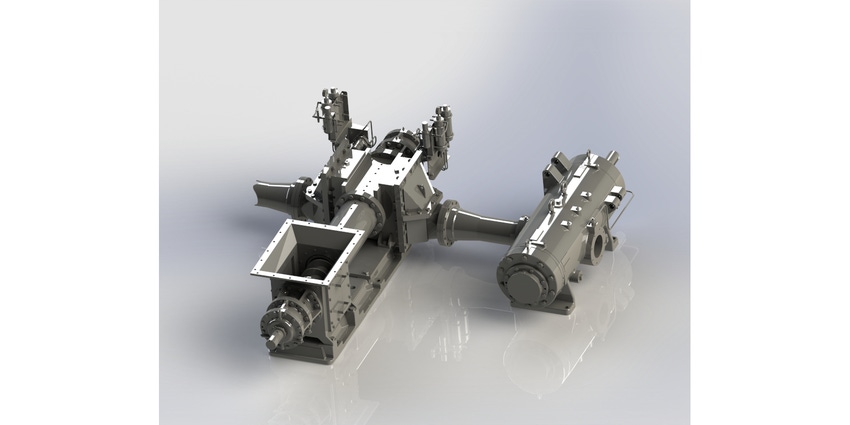Susan Testa, global product line manager, FLSmidth Inc., details the opportunities for reducing energy costs, increasing throughput, and cutting costs on pneumatic conveying lines.
November 30, 2020

Susan Testa, global product line manager, FLSmidth Inc.
Whatever happens next with market dynamics, achieving efficiencies will continue to be foremost in people’s minds. Whether you operate a port, a terminal, or a manufacturing plant, the ability to do more with less will be what sets you apart from the competition.
Pneumatic conveying is already widely adopted as the most efficient means of material transport. It’s both cleaner and safer than mechanical methods and, with the right technology, you can achieve impressive volumes and speeds. Key to this capability are the core pump and compressor technologies, which can either make or break your process.
This kind of equipment is built to last, so unless you are very unlucky – or if you haven’t been keeping up your preventive maintenance strategy – then it’s not an area of your process that you would usually replace. However, if you are looking to gain efficiency either by increasing volume or speed of transport, reducing energy consumption, or by regaining control of your maintenance approach, a pump and compressor upgrade is a good place to start.
Increasing Volumes and Speed
As demand on your facility increases, it’s imperative that your material handling system can keep up. Bottlenecks not only cause stress and lag in other areas of your operation, but can also result in significant maintenance and material quality issues.
Increasing capacity requires an uptick in the volume of materials that can move through the pump and/or the speed at which materials can move. The latest generation screw pump has been redesigned for greater throughput and higher pressure by lengthening the barrel and screw, improving the seal, and changing the structure of the inlet hopper. This enables a >15% increase in volumetric efficiency, giving you the flexibility to increase throughput when needed.
Reducing Energy Demand
Cutting energy costs can make a significant difference to your bottom line – and have an impact on operational sustainability. Investing in the best available technologies is an obvious way to cut OPEX and meet environmental targets.
With the improved seal on the new screw pump, greater energy savings are possible for higher-pressure applications (20–25 psi and higher) and power savings of up to 15% can be achieved in like-for-like applications. Reducing power consumption not only saves money and reduces your carbon footprint; it also means that your equipment isn’t working so hard, giving you better equipment life and reducing maintenance needs.
Increasing Availability
Done well, maintenance is what keeps your system performing optimally. But if maintenance becomes a burden, it’s a sign something is not going to plan. A few things can make a real difference here:
Spotting the early indications of a problem
Acting at the right time
Understanding the root cause
With these three things in play, you have a preventive maintenance strategy that will deliver long equipment life, high levels of availability, and low operating costs.
The screw pump and rotary vane compressor have been around for more than 100 years, their robust design proven by the fact that some 100-year-old models are still in operation. In recent years, additional measures have been introduced to make maintenance even simpler and safer. For example, all new screw pumps are equipped with a three-piece screw, which splits the pump screw into three sections – the center section being the replaceable wear part. This eliminates the need to disconnect the coupling to perform maintenance, saving the bearings and seals from being exposed to a dusty, dirty plant environment. Now a screw change takes two technicians just 3–4 hours, about a third of the person hours of the old one-piece screw type.
Cutting Costs
Increasing throughput, reducing energy consumption, and being more proactive about maintenance are all strategic ways to improve cost-efficiency. Reducing the total cost of ownership (TCO) should be the driver for all process decisions, since that is a core tenet of achieving optimum process efficiency. A quest to reduce both CAPEX and OPEX was behind the recent rotary vane compressor remodel. The new rotary vane compressor design has simplified castings, creating a cost saving that can be passed on. The cooling water jackets have also been redesigned, reducing weight and minimizing costs.
Because operation and maintenance practices are a big part of TCO, training is also important.
Long-Term Performance Goals
Increasing efficiency will continue to be the main goal of manufacturing plants, ports, and terminals for the foreseeable future. It’s hard to imagine another target that comes close in terms of importance to an operation’s future viability. And while many legacy technologies continue to perform well, there is always room for improvement.
Susan Testa is global product line manager, FLSmidth Inc. For more information, call 610-264-6011 or visit www.flsmidth.com.
You May Also Like


